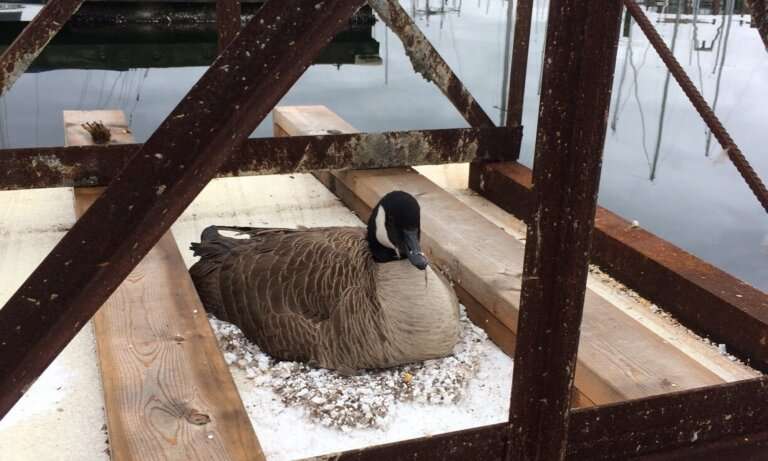Breaking down ocean polystyrene—pollution on a global scale

A walk along the beach is a favourite way to connect with nature and, ideally, offers the opportunity to escape the flotsam and jetsam of everyday life. Unfortunately, most of us lucky enough to have access to the coast are conscious of the remains of that everyday life being dragged ashore with each tide, and one particular kind often stands out: the white snow of broken-up polystyrene.
Foamed polystyrene (or styrofoam) is one of the most common components of marine litter found floating at sea or washed up along coastlines. Not just a popular choice for many kinds of packaging and insulation on land, polystyrene also has a variety of maritime use in ports, marinas, aquaculture, fisheries, and leisure activities. But foamed polystyrene never fully biodegrades, and can be a serious threat to ocean life as it crumbles into thousands of puffed fragments in the marine environment.
Amidst growing concern about the pollution it causes, several countries have, in recent years, restricted the use of certain foamed polystyrene products, such as takeaway containers and cups. While stopping the unnecessary use of plastic is important, efforts thus far have largely overlooked foamed polystyrene pollution originating directly from activities taking place on or near the ocean, and have yet to assess the most effective ways to address this significant potential source.
With that in mind, Fauna & Flora International (FFI) has carried out scoping research to identify the ways in which foamed polystyrene is used in marine activities, how these contribute to ocean polystyrene pollution, and what could be done to reduce that contribution. Sharing these ideas widely, particularly with users of foamed polystyrene products at sea, will be crucial for exploring how our recommendations might be put into practice.
Sinking in plastic snow
Buoys, floats and pontoons represent some of the most significant marine uses of foamed polystyrene.
In the UK, pontoons and large buoys are increasingly covered in hard plastic, but there is no legal requirement for this and smaller, uncovered foamed polystyrene buoys and net floats are still used in fishing and aquaculture. In other regions, oyster, clam and mussel farming traditionally makes heavy use of uncovered foamed polystyrene for floats and rafts, resulting in significant pollution of coasts and seas when these are damaged or discarded. Research in Vietnam's Cat Ba Archipelago estimated that 54,500 foamed polystyrene floats are in use at any one time for aquaculture, and in a survey of Hiroshima Bay, Japan—where oysters are farmed—99.5% of marine litter was foamed polystyrene fragments. In Taiwan, efforts are underway to encase exposed floats to protect them from damage, or replace them with alternatives. On Lasqueti Island in Canada, foamed polystyrene that appears to come from nearby aquaculture floats clogs up the beaches. Local residents hold an annual 'Styrofoam Day' to clean up, and report of volunteers sinking knee-deep into the little balls of foam. Canada is now considering new legislation requiring foamed polystyrene products to be encased in hard plastic.
In Hong Kong, fishermen often discard foamed polystyrene fish boxes used to store and sell their catches as soon as they get too dirty or damaged, and these are frequently found strewn across beaches. Foamed polystyrene fish boxes are often used in the UK to transport seafood, and there's rarely a way to collect and recycle them.
Leisure activities also play a role—foamed polystyrene blocks used to support sailing boats when out of the water are sometimes left abandoned, and it's been estimated that up to 16,000 bodyboards are found in UK waters every year.

Scaling up action on ocean polystyrene pollution
It's not that people working and relaxing at sea are especially keen to use foamed polystyrene products, but often there simply isn't a better alternative for the purpose they serve—or if there is, it's more expensive. Some countries and states are limiting the use of exposed foamed polystyrene with laws requiring more robust design of buoys, floats, and pontoons with hard plastic covers—a simple step that helps protect exposed polystyrene from weathering by waves, UV light, and being pecked at or burrowed into by wildlife. Others are trialling alternative materials for fish boxes or researching more effective ways to recycle foamed polystyrene. There is still a long way to go, however, and efforts around the world have been patchy at best.
FFI's list of recommendations seeks to ramp up efforts to address pollution from marine uses of foamed polystyrene. These proposed interventions aim to reduce its use at sea, improve product design or in-use care and make it easier to dispose of foamed polystyrene responsibly, as well as highlight potential opportunities to harness new technologies that could help with monitoring and enforcement. To encourage wider engagement and support for tackling the problem, we also recommend increasing awareness of the impacts of foamed polystyrene pollution among those who use it in the marine environment, both in the UK and internationally.
Provided by Fauna & Flora International



















